Media | Articles
In the Moment: Lewis and the elephant kid
Welcome to a new weekly feature we’re calling In the Moment!
This all started in Slack, the messaging software we use for staff communication. Several weeks ago, Hagerty’s editor-at-large, Sam Smith, began kicking off our mornings by plopping a random archive photo into our chat room.
In addition to being a lifelong student of automotive history, Smith drinks a lot of coffee. Each photo he dropped into the conversation was accompanied by a bit of caffeine-fueled explanation.
We liked these drops a lot, so we’re sharing one here each Thursday. Enjoy, and let us know what you think in the comments! —Ed.
**
Marketplace
Buy and sell classics with confidence
I had surgery this week. They knocked me out for it, an IV pumping fluid into my arm until I was not asleep but instead shut down so far that my brain does not even remember falling unconscious. When I woke, there were meds, to keep the pain at bay.
That surgery was on Monday. It is now Thursday, three days later, December 15, 2022. To be honest, I am still a little out of it. Lots of brain fog. Moving slowly. But I am back at my desk. Life goes on.
Which means it’s time for another In the Moment!
This site’s editor, a gentleman named Eric, is aware of my current state. He asked that I take a shot at writing this post, if I felt up to it. But in that ask, he gave an ultimatum:
Rest, he said, and take care of yourself. And do not, he added, overexert by whipping up another 2500-word, feature-length ITM, or I will come to your house and yell at you until you fall over. Make it short and pithy.
Okay, I said. And then I definitely did not send Eric the following stock image from the 1960s, an image that came up when I googled some combination of the words “short” and “pith helmet,” because that is what you type into a search engine when your mind is temporarily a few sandwiches short of a picnic and everything hits funnier than usual.

Side note: Check out this kid! The image is a metaphor for how I feel right now: How did I get here? What do I do with my hands?
(Unpacking: If I am the baby in this metaphor, then . . . the elephant represents reality, or perhaps man’s inhumanity to man or something? I don’t know. Post-op meds are weird. The doctor said I could go back to work. Ha! What do doctors know?)
In the Moment usually focuses on a wire-service photo from our archives. The image at the top of this post is not one of those. I took that photo in fall of 2012, in Austin, Texas, at the Circuit of the Americas, with an old film camera and a 50-millimeter lens. Film nerds may be curious as to the stock used; it was Ilford HP5 400, shot and developed at box speed.
The photo shows Lewis Hamilton, the British Formula 1 driver, during the United States Grand Prix weekend, in a TV interview. To the right is former F1 team owner and legendary grand-prix gadfly Eddie Jordan. (Look at that shirt! Like Seventies wallpaper. Memory fails, but I think it was mostly purple. The man is a treasure.)
To Jordan’s left is former F1 driver David Coulthard. The two men were then working as commentators for the BBC. Just out of frame, to the right, was a TV camera and a small display. The latter showed a replay of one of Hamilton’s laps that weekend; Lewis narrated the footage as Jordan and Coulthard asked questions.
This was the first USGP to be held at the Circuit of the Americas. The track was then quite new; construction had been completed only weeks prior and rushed to a finish. Many of the track’s grassy areas were still just seeded mud. No one knew if the weekend would go well or attract a decent crowd. The race itself was somewhat dull, but attendance was healthy, more than 212,000 people.
F1 has grown in America since. In 2012, at a brand-new track, for a brand-new race, for a series America had to date never really cared about, more than 200,000 people seemed remarkable. This year’s U.S. Grand Prix, still at Austin, drew more than 440,000. Ten years ago, the sport was a different kind of spectacle, the engines deafening and the cars relatively small but the racing less interesting. I liked the deafening part and tend to hate how the current cars sound like vacuum cleaners, but hey, I’m simple.
Back to Lewis. Look at the man. Eyes bright, still so young! He was then just 27, in his fifth season in F1, just one world championship under his belt, from 2008. He now has seven. (2014, 2015, 2017, 2018, 2019, 2020.)
Then as now, Hamilton was an epochal talent. He had been named a Member of the Order of the British Empire (2008) but had not yet been knighted. He had no public persona of any substance—he was just this nice young prodigy from Stevenage who had lived a relatively abnormal life, being trained as an athlete and focused on a career path since early youth.
Now, of course, we know so much more. Or at least, we know the more that he shows us. There is his Instagram, the unique evolution of his approach to fashion, the celebrity girlfriends and friends, the public behavior seen by so many as either petulant or noble, the activism, the guy on Netflix. Countless reasons for those who know the man’s name to think they understand him.

I don’t have much interest in celebrity culture. I do find it interesting, however, how our perception of a public figure can change with time. Especially when it comes to athletes, people about whom we generally know very little and yet so often pretend to know so much. So many people have opinions on LeBron, or Lewis, or Tom Brady or whomever, and what do we really know about these people, about who they are when no one is looking?
Lewis in 2012 was not the Lewis we know in 2022. He did not appear weary or rushed while walking through paddocks, as he can now—hell, he still walked. (These days, it’s mostly wheels.) He would stop to talk to people or pause to sign autographs for fans at the fence, and his expressions were slightly different. He had simply been through less.
The 2012 USGP took place in November. Two months prior, Hamilton had announced his upcoming departure from McLaren. He was trading the team that had brought him into F1 for the outfit that would give him one of the longest championship runs in the history of the sport. Even then, journalists and fans insisted the guy had never had a bad car (incorrect), that the Mercedes move was stupid and disloyal (ditto), or that he was, as a driver, simply the beneficiary of too much luck. (Define “too much,” you goons.)

Many people who watch F1 still take joy in mocking the person Lewis has become. Or, more accurately, the person we see. F1 is one of the most popular sports in the world, and so you can find enough op-ed pieces or social-media posts aiming that kind of vitriol at everyone there, from team managers like Christian Horner and Toto Wolff to fan favorites like Danny Ric and Lando Norris.
At COTA, in that paddock, I found myself accidentally next to the man so many times: Turn around, there’s Lewis. Leaving the garage and talking to Mario, there’s Lewis. Bumping into Ron Howard, in Austin on a research trip for his upcoming film Rush. Talking to Niki Lauda, his future advisor at Mercedes. In the post-race interview scrum with Fernando Alonso. What struck me was how he moved like anyone else in the crowd—just this guy, you know?—years into being an international superstar but not yet forced to carry or guard himself like one.

If there is a point to all this, it is only that we are each perpetually on the change. We grow up and out, we become smarter or more ignorant, grow more or less set in our ways. No one you know is today who they were a few years ago. Each of us knows this, and yet we so often ignore it in favor of knee-jerk emotion.
2022 was Lewis’s first winless season. The discussion of why is best for another time, but that final race, in late November of this year, reminded me of Austin in ’12. And of how some of the most interesting episodes of Drive to Survive have shown us bits of a Lewis previously unseen. Weekends where he struggles because he’s sick, or where he cannot put words or a lap together because his life and brain simply aren’t working as normal that day. In those moments, he is more than just caricature, and in ways that the show’s editors cannot tweak or tint.
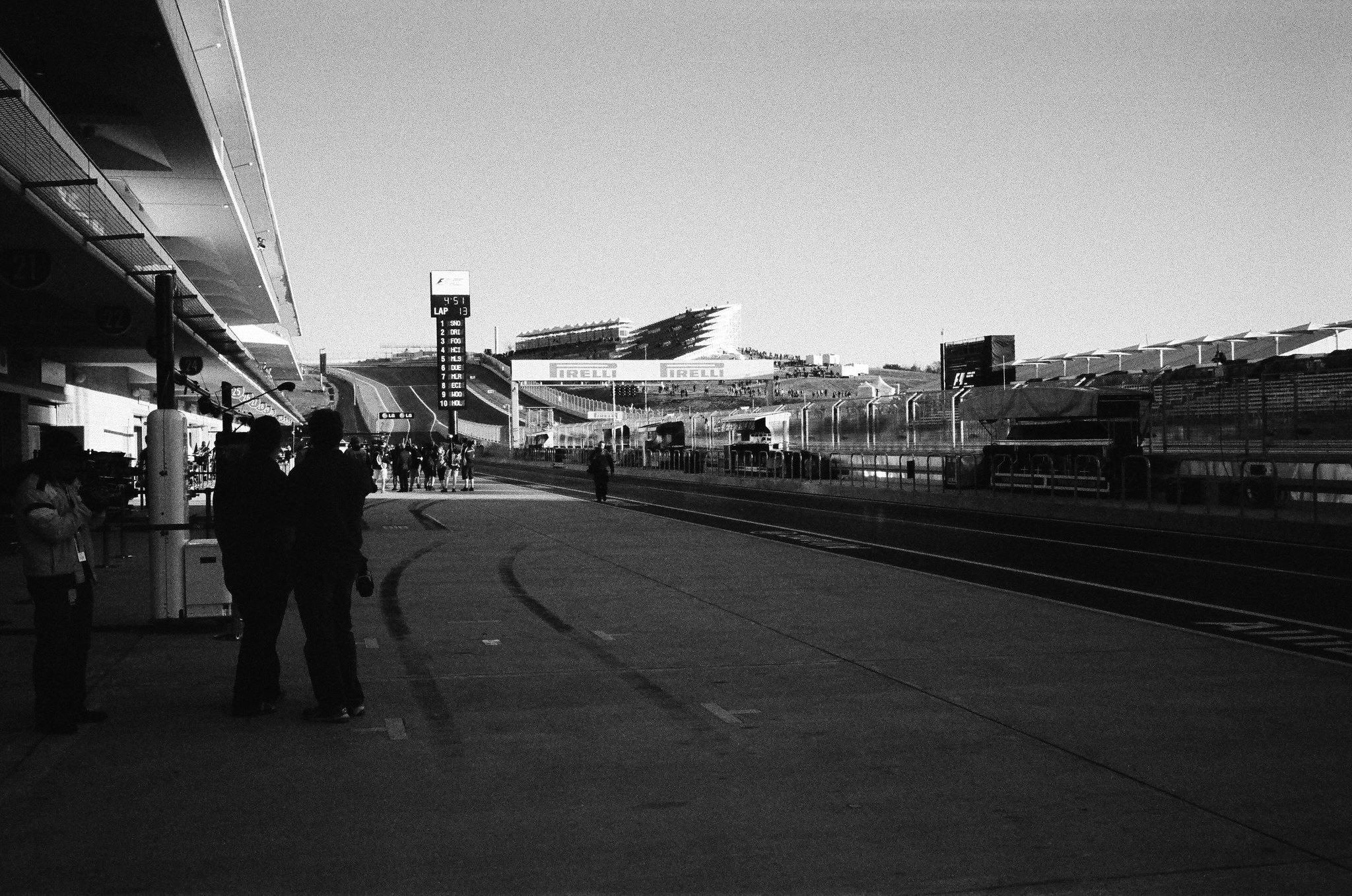
We all have days like that. The interesting thing about celebrities, of course, especially the giant names, is how they cannot go about their jobs without being judged for even the slightest of failings. Which is not to say we should pity them. Nobody puts a gun to your head and makes you get into an F1 car or stand in front of a camera. But it does help, occasionally, to step back and remember that everyone is human.
It’s so easy to be bright-eyed and optimistic when you are young, and to believe that people are capable of the good kind of change. It is so very difficult to maintain that attitude years later. The reason why is never as simple as anyone says.
What does this have to do with that kid in the helmet?
Simple: You ever just wake up on one of Those Days, half a mess, and find yourself happy to not be famous? Thrilled that no one is taking your picture?
Let’s say you were famous, and that you realized someone was taking your picture in that moment. You’d make a face like helmet kid, right?
I must now close this browser tab and save these words. But first, I’m going to make and drink an industrial-strength bucket of coffee. Because my brain is still exhausted and half-consumed by the act of trying to stitch my body back together. I am become pithy, needer of rest.

Have a good day, guys!
—Sam
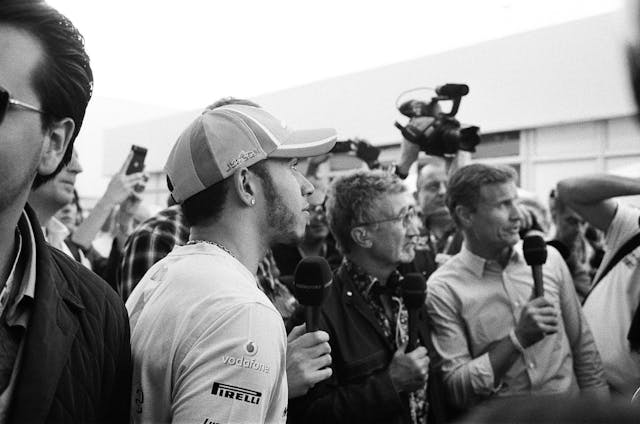








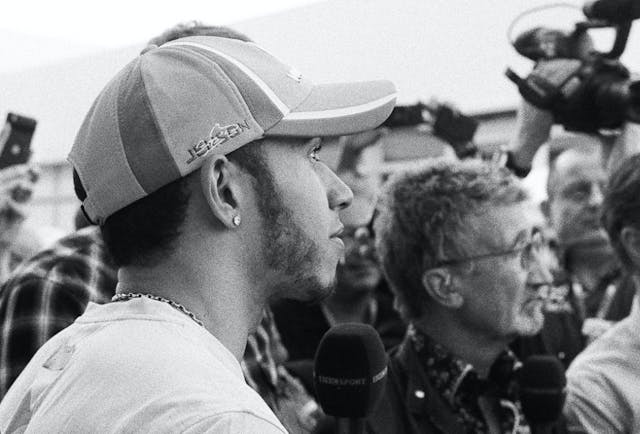
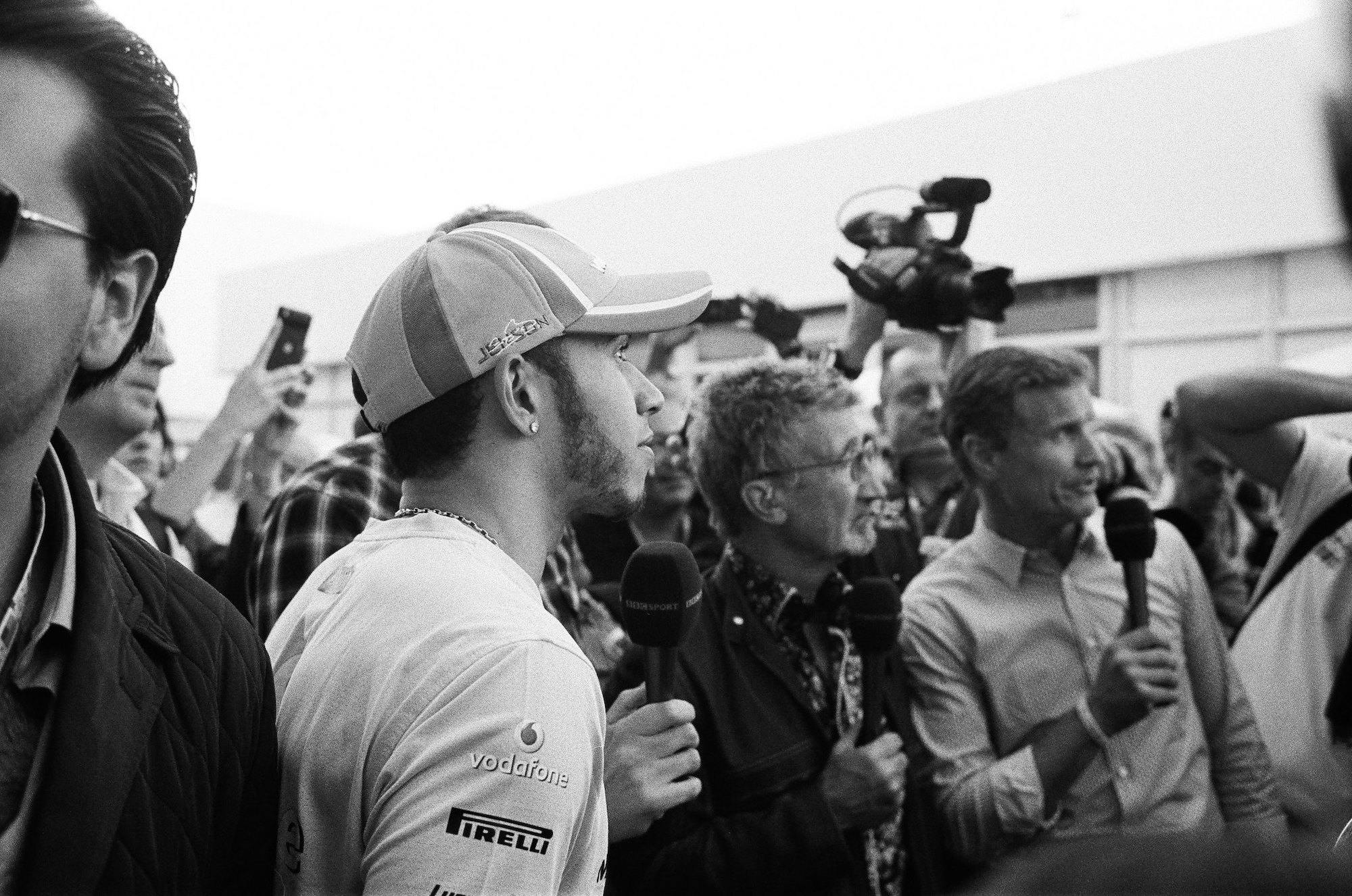
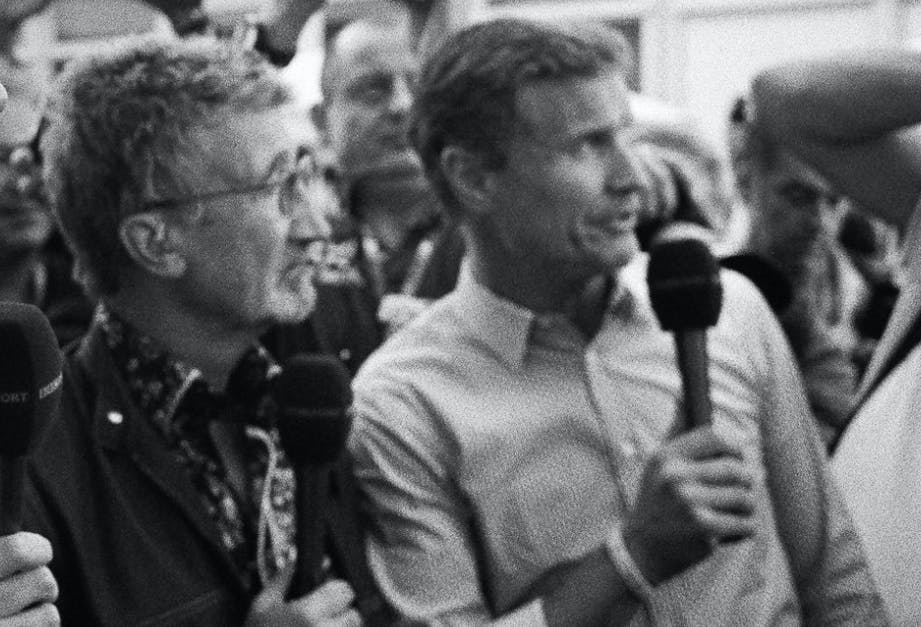
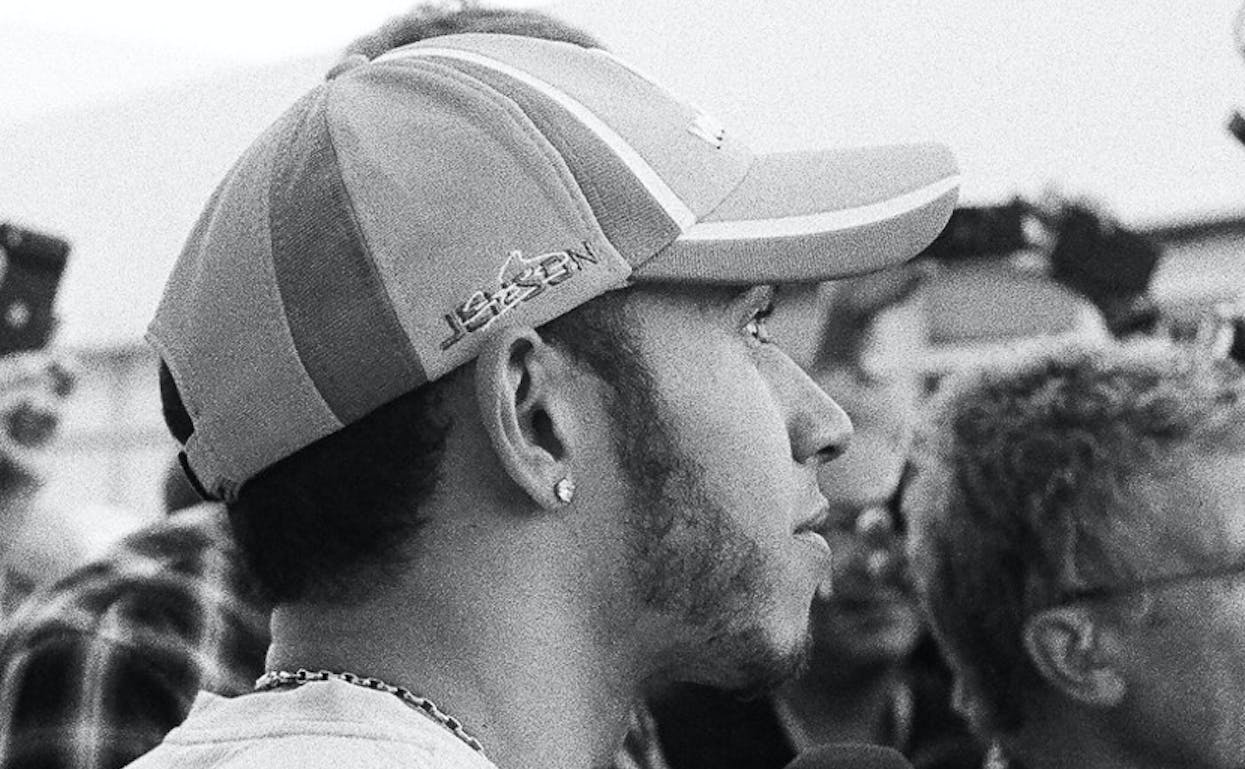
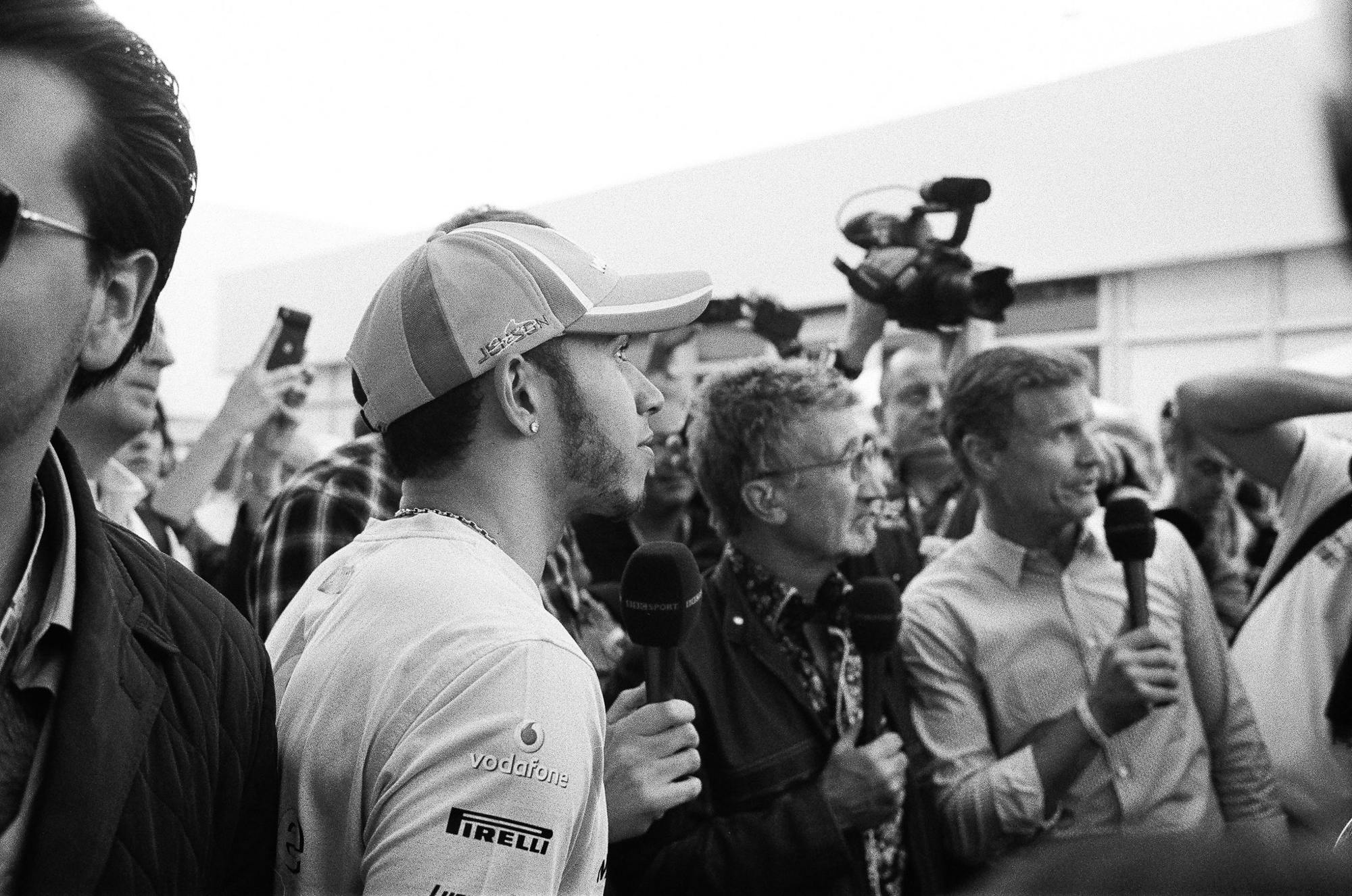












I enjoy these In The Moment articles. Sam is one of the best writers on the Hagerty staff. With regard to this particular ITM episode, I remember when Lewis was just a Brit. Sad.
Thank you! Awfully nice of you to say—these are fun ones to write, and I’m glad we get to share them.
Lewis is such an interesting character. As with so many athletes sheltered their whole lives, you get the feeling he’s spending most of his time figuring out how to be himself. And wondering what his life would have been like if he had been, say, a plumber from Coventry.